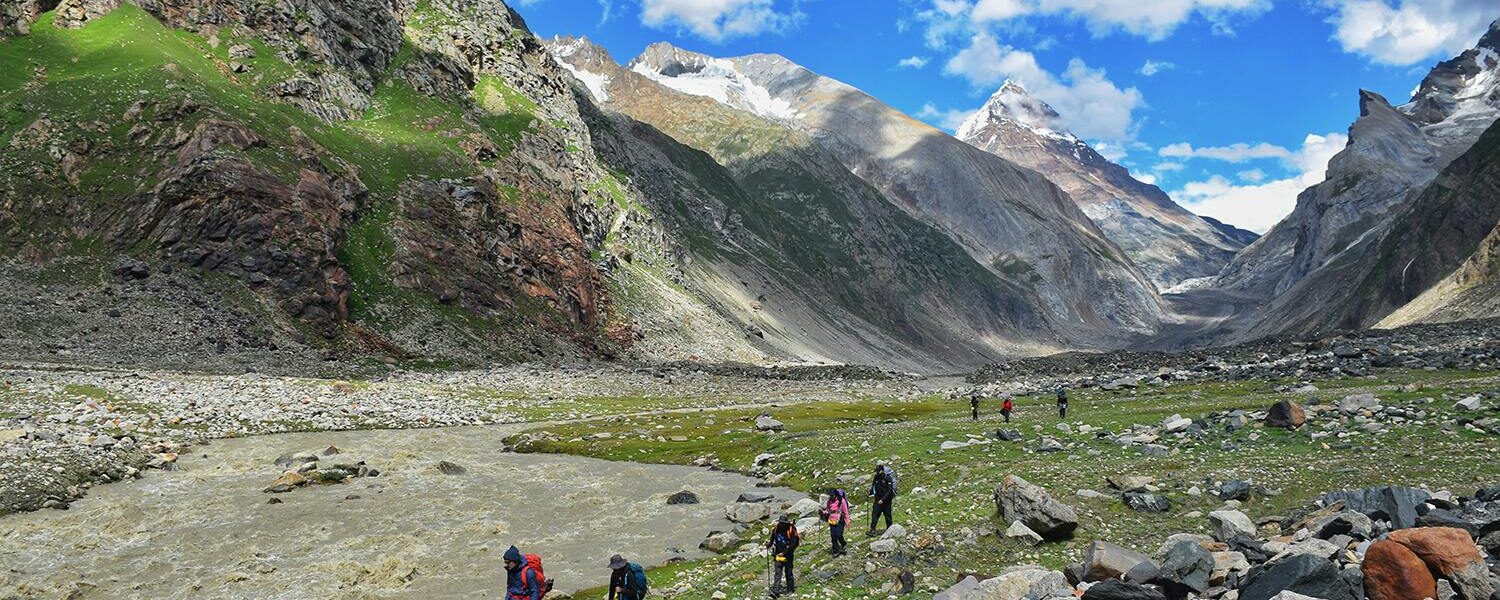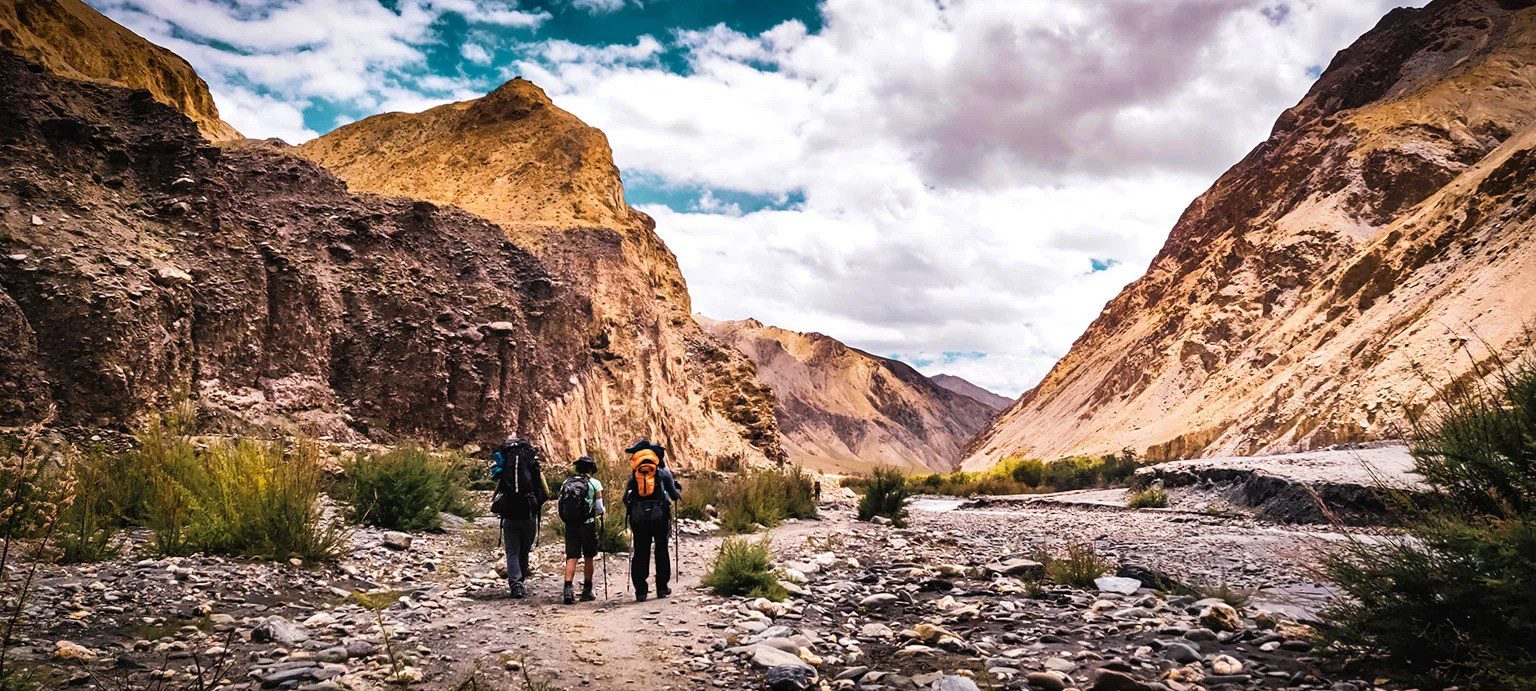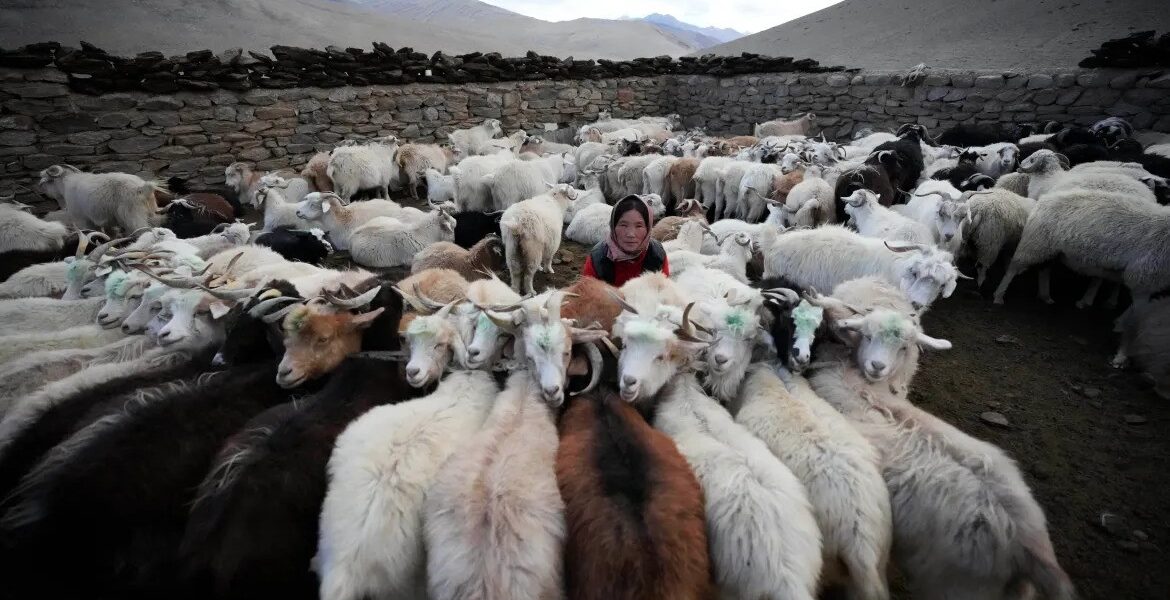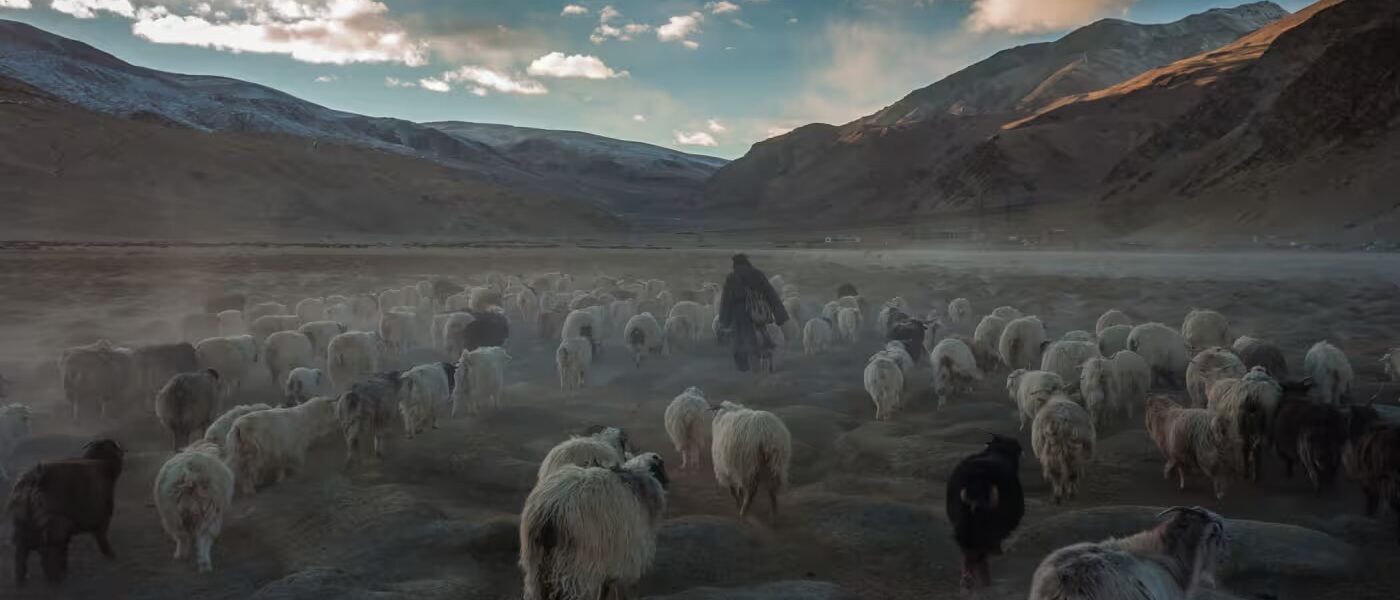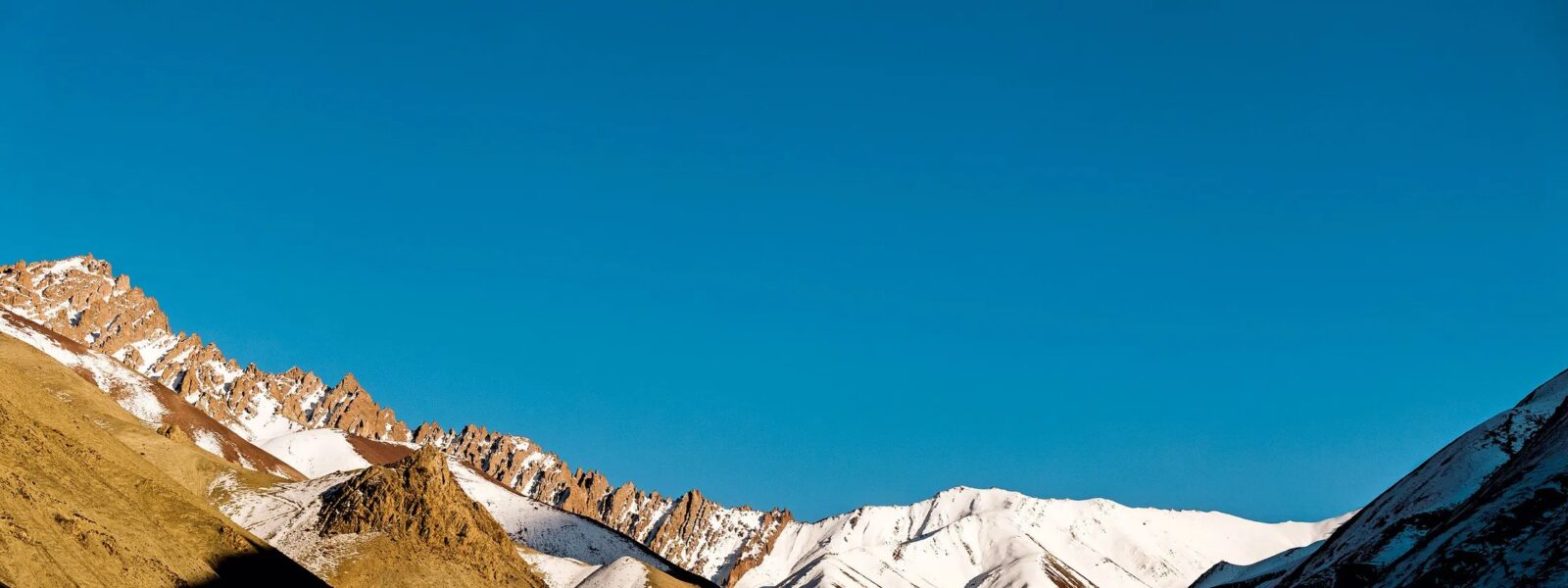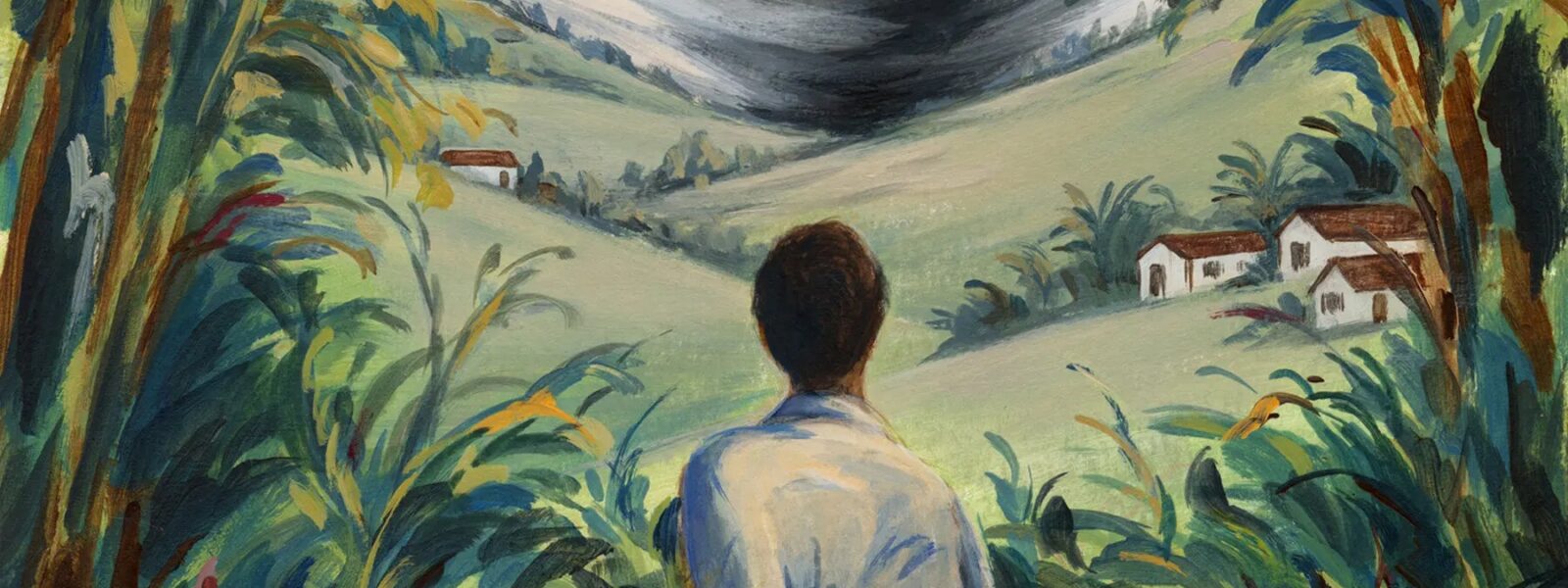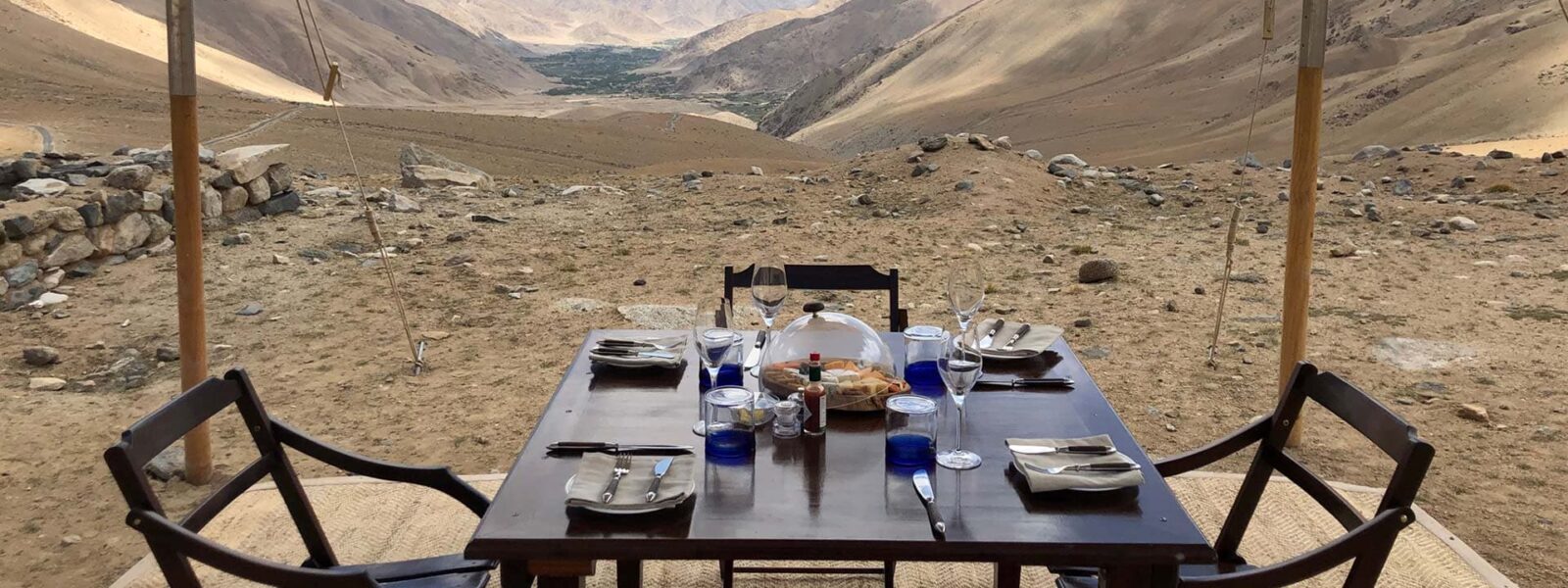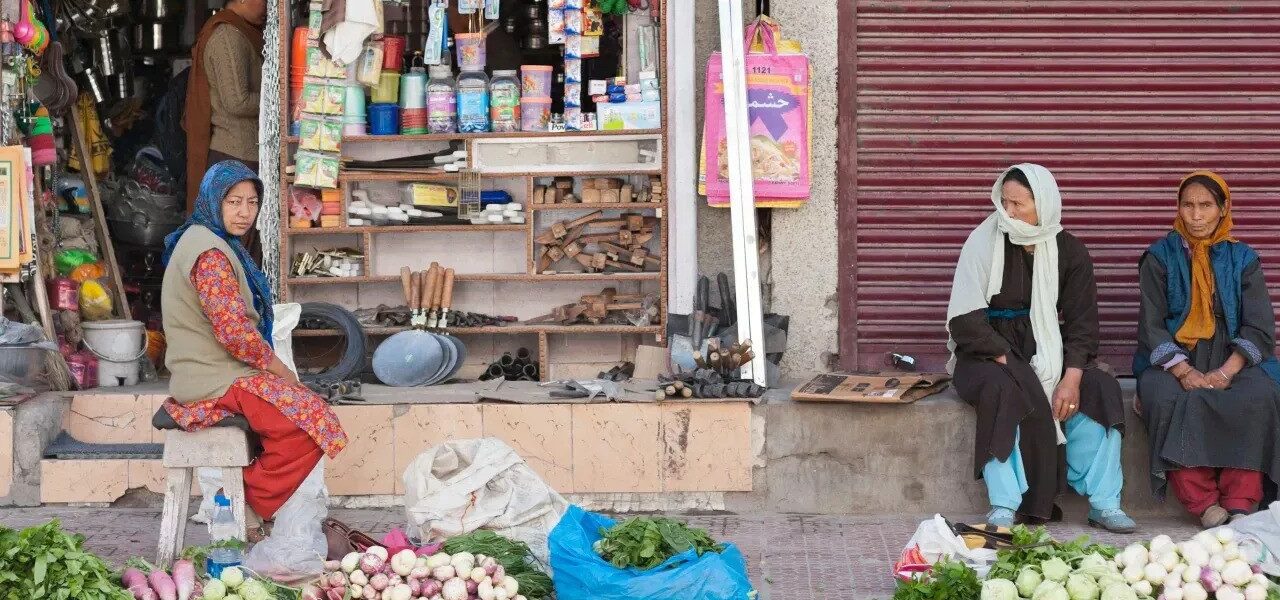Discover Ladakh: 8 Offbeat Trails for the Adventure-Seeker
Ladakh, often referred to as the “Land of High Passes,” is an adventure-seeker’s dream destination. Nestled in the northernmost part of India, Ladakh offers a stunning blend of rugged mountains, serene valleys, and ancient Buddhist culture. While many flock to its popular trekking routes, the region is also home to hidden trails that promise solitude, challenge, and the thrill of the unexplored. In this blog post, we’ll take you on a journey through 8 offbeat trails that offer a unique adventure for those seeking something beyond the usual tourist paths.
Why Ladakh is a Must-Visit Destination for Adventure Seekers
Ladakh is a place where towering mountains meet wide, empty valleys, and where ancient cultures thrive in remote monasteries. Its unparalleled natural beauty, combined with the physical challenge of trekking at high altitudes, makes it one of the most sought-after adventure destinations. Beyond the popular treks like the Markha Valley, Ladakh holds secrets in the form of untouched trails, offering adventure-seekers a chance to explore the region’s raw, untamed beauty. Whether you’re a seasoned trekker or looking to test your limits, Ladakh’s off-the-beaten-path trails provide an unforgettable experience.
8 Offbeat Trails in Ladakh for the Ultimate Adventure Experience
1. Lamayuru to Alchi Trek – Exploring Remote Monasteries
The Lamayuru to Alchi trek is a journey through Ladakh’s spiritual and natural heartland. This trail takes trekkers from the ancient Lamayuru Monastery, perched dramatically on a hillside, to Alchi, home to one of the oldest monasteries in Ladakh. Along the way, you’ll pass through remote villages, cross high passes, and experience the tranquility of the Ladakhi wilderness.
- Difficulty: Moderate
- Highlights: Remote monasteries, stunning landscapes, cultural immersion
- Best Time: June to September
This trek is perfect for adventurers who not only seek solitude but also have an interest in Ladakh’s rich Buddhist heritage. It’s a cultural and physical adventure wrapped into one.
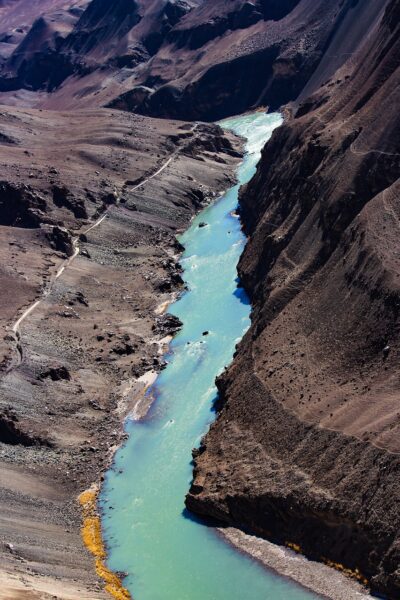
Lamayuru to Alchi via Stakspi La Trek: A 5-Day Trek
The Lamayuru to Alchi via Stakspi La trek is a thrilling and culturally rich journey through the heart of Ladakh, one of the most scenic regions in the Indian Himalayas.
2. Nubra Valley Trek – A Hidden Gem in the Himalayas
While Nubra Valley is known for its desert landscapes and Bactrian camels, it is also home to lesser-known trekking routes. The Nubra Valley trek takes you through isolated villages, across glacial rivers, and over the high Lasermo La Pass (5,400 meters). The panoramic views of the Karakoram Range and the hidden oases of green farmland make this trek a standout.
- Difficulty: Moderate to Challenging
- Highlights: Remote villages, high passes, views of the Karakoram Range
- Best Time: July to September
This offbeat route is perfect for those seeking adventure in an area less frequented by tourists, with plenty of opportunities for cultural immersion in the remote villages.
Nubra Valley Phyang to Hunder Trek: A 7-Day Adventure Guide
Experience the stunning beauty of Ladakh on a 7-day trek through Phyang, Lasermo, Hundar Dok, Skarchen, and Hunder Gorge.

3. Sham Valley Trek – The ‘Baby Trek’ with Hidden Surprises
The Sham Valley trek, often referred to as the “baby trek” due to its relatively easy terrain, is ideal for those looking for a mix of adventure and culture without the physical strain of high-altitude trekking. The trail passes through small Ladakhi villages, verdant fields, and ancient monasteries. While it’s a shorter and easier trek, it still offers plenty of offbeat surprises, including lesser-visited monasteries like Likir and Rizong.
- Difficulty: Easy
- Highlights: Ancient monasteries, scenic villages, low-altitude terrain
- Best Time: May to October
This trek is perfect for beginners or those looking for a short yet fulfilling adventure that doesn’t compromise on Ladakh’s cultural and scenic beauty.
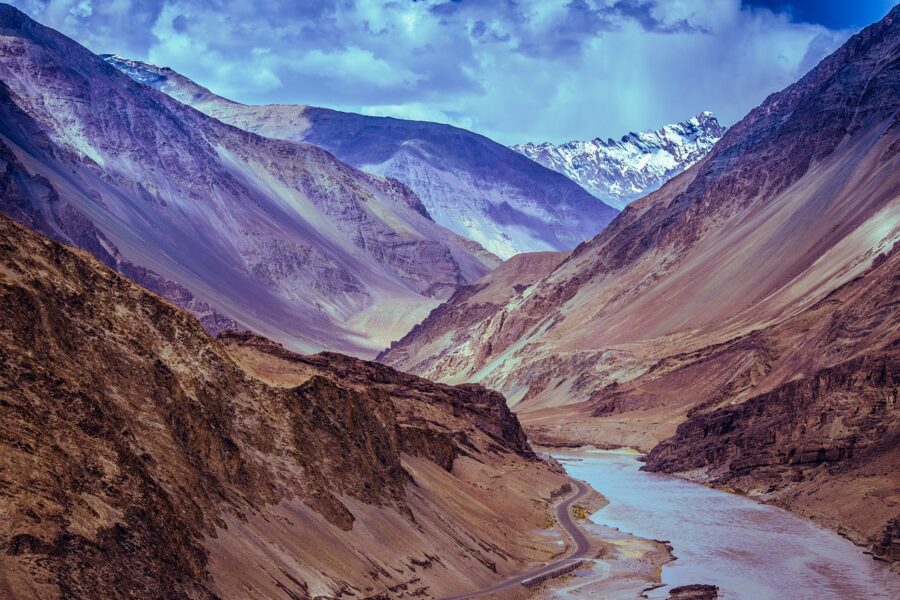
Sham Valley Trek: The Ultimate 3-Day Cultural Adventure in Ladakh
Discover the 3-day Sham Valley Trek in Ladakh, a perfect introduction to village life, scenic views, and cultural immersion.
4. Chadar Trek – Walking on the Frozen Zanskar River
The Chadar Trek is one of Ladakh’s most iconic, yet offbeat, treks. Taking place during the harsh winter months, this trek involves walking on the frozen Zanskar River, also known as the “Chadar.” The trek provides a unique adventure, as trekkers navigate the icy surface while surrounded by towering cliffs. It’s a test of endurance and resilience in freezing conditions.
- Difficulty: Challenging
- Highlights: Frozen river walk, rugged canyon landscapes, remote Zanskari villages
- Best Time: January to February
The Chadar Trek is perfect for thrill-seekers looking for a winter adventure unlike any other. It’s a challenging trek that pushes you to your limits while offering unparalleled views of Ladakh’s icy wilderness.
Chadar Trek: The Ultimate Frozen Adventure – 9 Days
Get ready for an unparalleled adventure with the Chadar Trek, a rare opportunity to traverse a frozen river in one of the world’s most extreme environments.
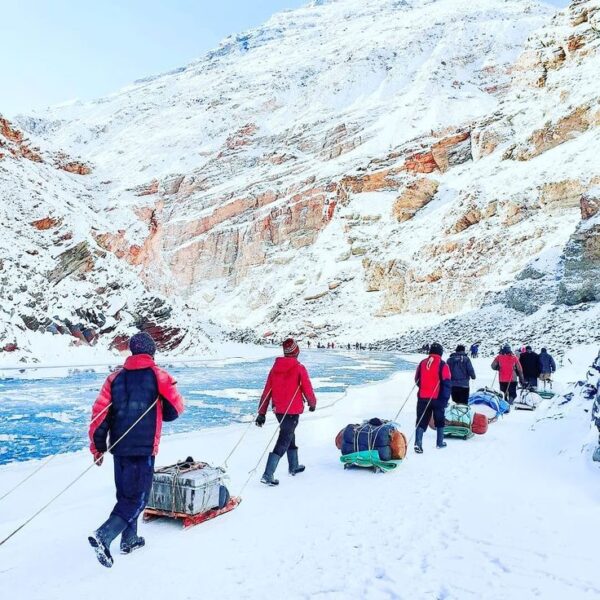
5. Markha Valley Trek – Offbeat Extensions Beyond the Popular Path
The Markha Valley trek is one of Ladakh’s most popular trekking routes, but it also offers offbeat extensions that few trekkers explore. For those looking to go beyond the usual path, there are lesser-known trails that lead to remote passes and secluded areas within the valley. These routes offer the same breathtaking views and cultural experiences, but with far fewer people.
- Difficulty: Moderate
- Highlights: Secluded trails, panoramic views of Ladakh’s mountains, remote villages
- Best Time: June to September
For those who have already trekked Markha Valley or are looking for a more solitary experience, these extensions offer a fresh perspective on one of Ladakh’s iconic routes.

Markha Valley Trek: Complete 8-Day Guide to Ladakh’s Best Trekking Adventure
Discover the complete guide to the Markha Valley Trek, an 8-day adventure through Ladakh.
6. Rumtse to Tso Moriri Trek – A Journey to Ladakh’s Hidden Lake
The Rumtse to Tso Moriri trek is a high-altitude adventure that takes trekkers through stunning alpine landscapes to the hidden gem of Tso Moriri Lake. This offbeat trek offers dramatic views, including snow-capped peaks, pristine valleys, and vast plateaus. The journey culminates at Tso Moriri, one of Ladakh’s most beautiful, yet lesser-known, lakes.
- Difficulty: Challenging
- Highlights: Pristine alpine lakes, vast plateaus, high passes
- Best Time: June to September
This trek is ideal for those seeking an off-the-grid adventure with the reward of witnessing one of Ladakh’s most breathtaking and isolated lakes.
Rumtse to Tsomoriri Trek: The Ultimate 10-Day High-Altitude Adventure
Traverse diverse landscapes, challenge your spirit, and immerse yourself in the breathtaking beauty of the Himalayas.
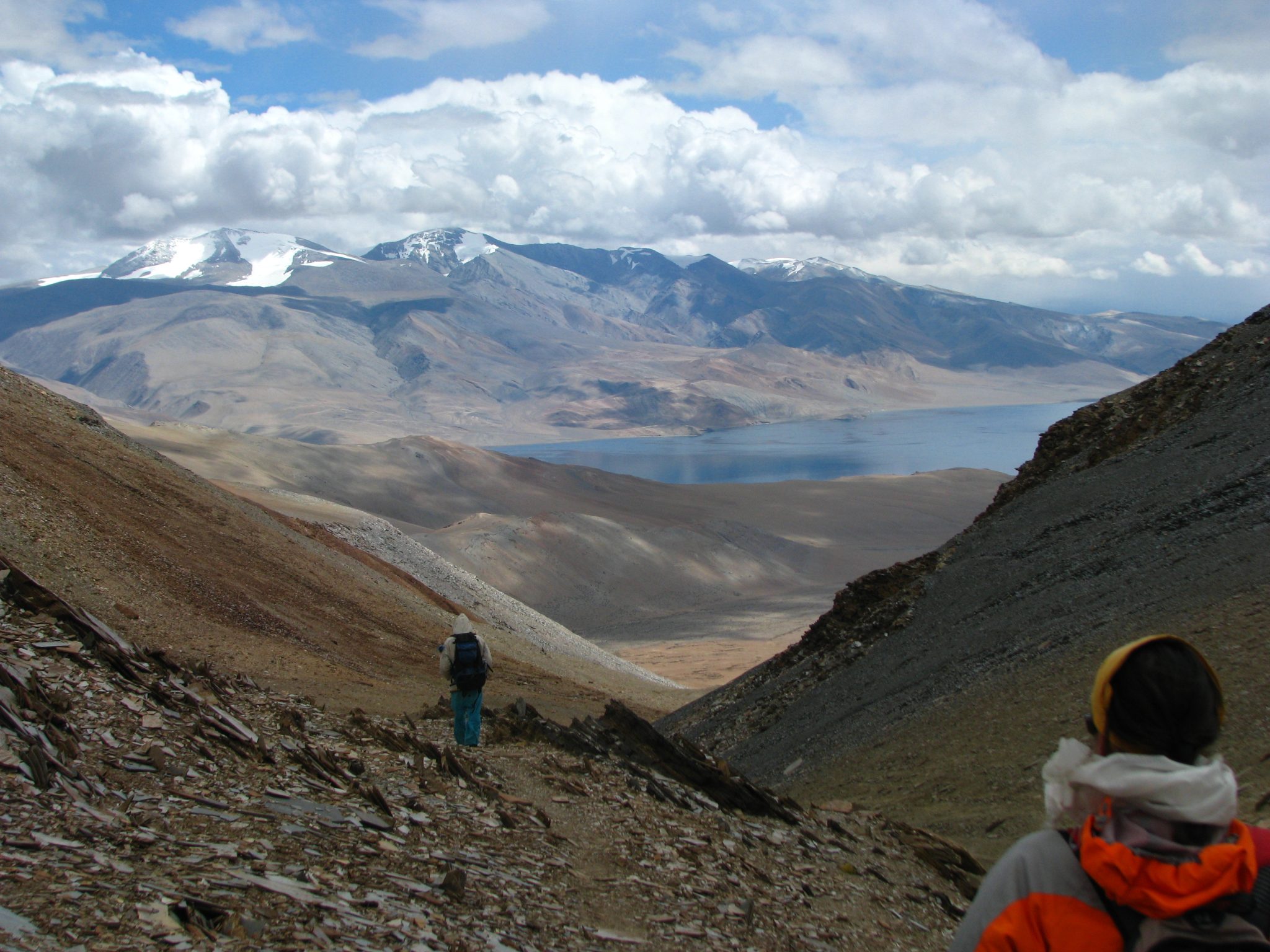
7. Zanskar Region Trek – Exploring Remote Corners of Zanskar
While Zanskar Valley is already known for its rugged beauty, this trek takes you to the more remote regions of Zanskar, far from the typical tourist trails. This journey through places like Phuktal Monastery, Purne, and Ichar will give trekkers a rare opportunity to explore one of the least populated and most isolated regions of Ladakh. The trek crosses high passes and wild, untouched valleys.
- Difficulty: Challenging
- Highlights: Remote monasteries, high passes, isolated villages
- Best Time: June to September
For seasoned trekkers, this offbeat Zanskar trek offers unmatched solitude and the chance to see a side of Ladakh that few others experience.
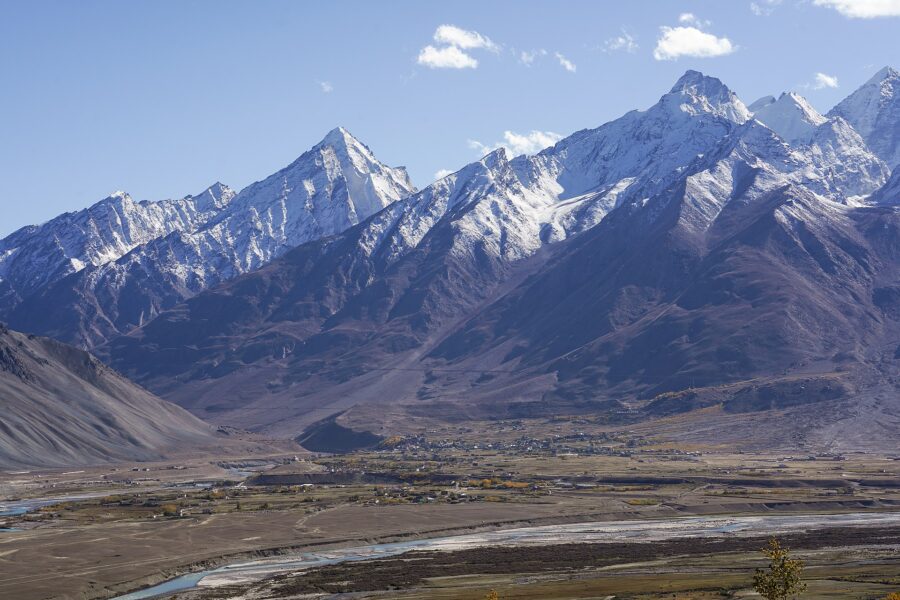
Zanskar Trek: Stongde to Raru via Phuktal : A 5-Day
Experience the rugged beauty of Zanskar on this trek from Stongde to Raru, passing through traditional villages and the iconic Phuktal Monastery.
8. Tsomoriri Lake to Kibber Trek – An Alpine Adventure Connecting Ladakh to Spiti
This trek offers an incredible journey from Ladakh to Spiti Valley, crossing some of the highest passes in the Himalayas. Starting at Tso Moriri Lake, trekkers make their way through remote passes and end in the isolated village of Kibber in the Spiti Valley. The landscapes are vast, empty, and awe-inspiring.
- Difficulty: Challenging
- Highlights: Stunning alpine landscapes, wildlife spotting, cultural experiences in Spiti
- Best Time: June to September
This is one of the best offbeat treks for those seeking an extended adventure through two of the most rugged and remote regions in the Himalayas.
Tso Moriri to Kibber Trek: Ultimate 7-Day High-Altitude Adventure in Ladakh & Spiti
The Tso Moriri to Kibber Trek is a thrilling 7-day high-altitude trek through the remote wilderness of Ladakh’s Changthang Plateau and into the breathtaking Spiti Valley.
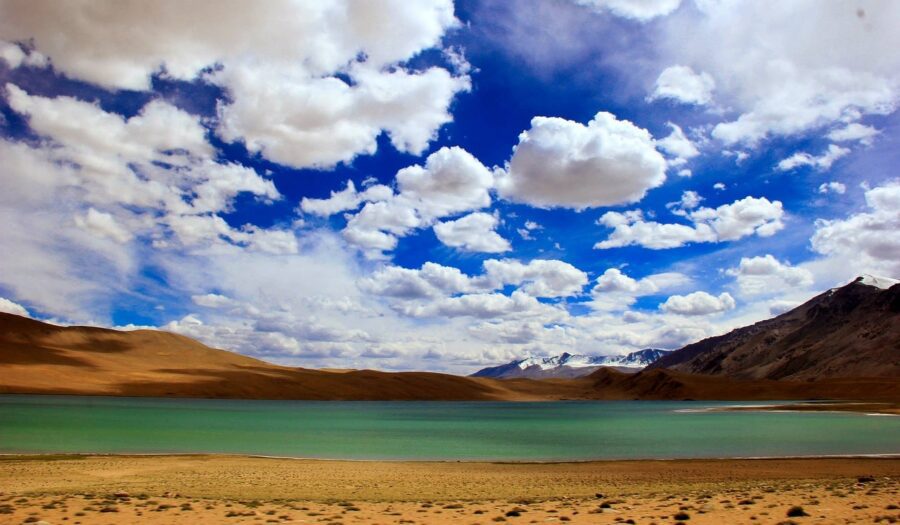
Best Time to Trek in Ladakh’s Offbeat Trails
Timing is crucial when trekking in Ladakh. Most of the offbeat trails are only accessible during the summer months (June to September), when the snow has melted and the passes are clear. However, for winter-specific treks like the Chadar Trek, January and February offer the best window. Make sure to plan your trek according to the season to avoid harsh weather conditions and ensure a safe journey.
| Trek | Best Time |
|---|---|
| Lamayuru to Alchi Trek | June to September |
| Nubra Valley Trek | July to September |
| Sham Valley Trek | May to October |
| Chadar Trek | January to February |
| Markha Valley Extensions | June to September |
| Rumtse to Tso Moriri Trek | June to September |
| Zanskar Region Trek | June to September |
| Tsomoriri to Kibber Trek | June to September |
Essential Trekking Gear for Ladakh’s Remote Trails
When embarking on Ladakh’s remote trails, having the right gear can make or break your adventure. Essential items include:
- Sturdy trekking boots: High-ankle, waterproof boots for rough terrain.
- Layered clothing: Temperatures can vary drastically between day and night.
- Sleeping bag: Rated for -15°C to -20°C, especially for high-altitude or winter treks.
- Trekking poles: Helpful for navigating steep or uneven paths.
- Hydration system: Camelbacks or water bottles with purification tablets.
- First aid kit: Include altitude sickness medication.
- Permits: Many offbeat trails require special permits (see the next section).
Safety Tips for Trekking in Ladakh’s Remote Regions
Trekking in Ladakh can be challenging, especially on offbeat trails where help is often far away. Here are some key safety tips:
- Acclimatize properly: Spend a few days in Leh or another high-altitude area to avoid altitude sickness.
- Stay hydrated: The dry mountain air can dehydrate you quickly.
- Hire a local guide: Many offbeat trails are poorly marked; local knowledge can be crucial.
- Pack for emergencies: Bring extra food, clothing, and a satellite phone if possible.
- Be weather aware: Mountain weather can change quickly; always be prepared for rain, snow, or sudden cold snaps.

Getting Trekking Permits for Offbeat Trails in Ladakh
Many of Ladakh’s trekking routes, especially the more remote ones, require permits. Some areas fall under restricted zones, and you’ll need an Inner Line Permit (ILP). The ILP can be obtained in Leh, either through a local tour agency or online. It’s essential to check the current regulations, as they can change depending on geopolitical situations.
| Trek | Permit Required |
|---|---|
| Lamayuru to Alchi Trek | No |
| Nubra Valley Trek | Yes (Inner Line Permit) |
| Sham Valley Trek | No |
| Chadar Trek | Yes (Inner Line Permit) |
| Markha Valley Extensions | Yes (Inner Line Permit) |
| Rumtse to Tso Moriri Trek | Yes (Inner Line Permit) |
| Zanskar Region Trek | No |
| Tsomoriri to Kibber Trek | Yes (Inner Line Permit) |
Eco-Friendly and Responsible Trekking in Ladakh
As adventure-seekers, it’s important to minimize our impact on the fragile environment of Ladakh. Here are some tips for eco-friendly trekking:
- Pack out all trash: Leave no trace and ensure you carry back all waste, including food wrappers and plastic bottles.
- Respect wildlife: Ladakh is home to unique wildlife, including the snow leopard. Maintain a safe distance and avoid disturbing their habitats.
- Stay on marked trails: Avoid creating new paths, which can cause erosion.
- Support local communities: Stay in homestays or eco-friendly lodges, and purchase goods from local vendors to support the region’s economy.
Conclusion: Why Ladakh’s Offbeat Trails Should Be on Every Adventure-Seeker’s Bucket List
Ladakh’s offbeat trails offer a once-in-a-lifetime experience for adventure-seekers. From high-altitude passes to remote villages and hidden monasteries, these treks provide solitude, challenge, and breathtaking beauty. Whether you’re walking on the frozen Zanskar River or exploring the pristine shores of Tso Moriri, each trail offers something unique. For those looking to go beyond the typical tourist routes, Ladakh’s hidden gems are waiting to be discovered.

Q&A Section
What are the best offbeat trekking trails in Ladakh?
The best offbeat trails in Ladakh include the Lamayuru to Alchi Trek, Nubra Valley Trek, Sham Valley Trek, Chadar Trek, Rumtse to Tso Moriri Trek, and lesser-known routes in Zanskar.
Is Ladakh safe for solo trekking?
Ladakh is relatively safe for solo trekking, especially on well-marked routes. However, it’s recommended to hire a local guide for offbeat trails as they are less frequented and can be challenging to navigate.
When is the best time to trek in Ladakh?
The best time to trek in Ladakh is from June to September for summer treks. Winter treks, like the Chadar Trek, take place between January and February.
Do I need permits to trek in Ladakh?
Yes, some areas of Ladakh require Inner Line Permits (ILP). Popular treks like Nubra Valley, Tso Moriri, and Chadar Trek require these permits, which can be obtained in Leh or online.
What should I pack for trekking in Ladakh?
Essential trekking gear includes sturdy boots, layered clothing, a sleeping bag rated for cold temperatures, trekking poles, hydration systems, and a first aid kit. Don’t forget permits and maps!
How difficult are Ladakh’s offbeat trekking routes?
Ladakh’s offbeat treks range from moderate to highly challenging. Routes like the Sham Valley are easier, while treks like Chadar and Rumtse to Tso Moriri are more demanding due to altitude and terrain.

